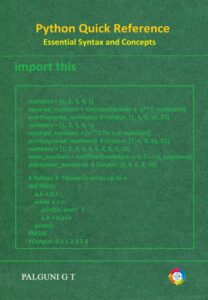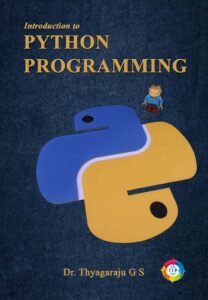Context refers to the set of circumstances, facts, or conditions that surround a particular situation, event, or piece of information. It provides a framework for understanding and interpreting meaning, as it helps to establish the significance and relevance of something by providing a background of related information.
Definition of Context
Here are five different definitions of context:
- Context is the set of circumstances, conditions, and information that surround a particular situation or event. It includes the environment, people, and objects that are present, as well as the actions, behaviors, and motivations of the individuals involved.
- Context is the background knowledge or information that is needed to understand a particular concept or idea. It includes the historical, cultural, and social factors that shape our understanding of a particular subject or topic.
- In linguistics, context refers to the words or phrases that come before or after a particular word or phrase and help to clarify its meaning.
- In computer science, context refers to the state or information that is needed to execute a particular program or operation. It includes the values of variables, the status of input and output devices, and other relevant information.
- In art, context refers to the circumstances and influences that shape the creation and interpretation of a particular work of art. It includes the historical, cultural, and social factors that influence the artist’s choices and the audience’s reception of the work.
Context represents the situation of an entity .

Definitions given by earlier works and standard dictionaries agree on the key idea that context describe situation. This definition clearly states that context is always bound to an entity. The entity itself is regarded as something that is relevant to the interaction between a user and an application. The user-application relationship is rooted in the traditional notion of an application, but not limited to it.
Dey and Abowd (2000) have also confirmed this by defining context as:
‘‘Any information that can be used to characterize the situation of an entity. An entity is a person, a place, or a physical or computational object that is considered relevant to the interaction between a user and an application, including the user and application themselves.’’
Winograd (2001) indicated that definitions like this are intended to be adequately general to cover the work that has been done on context-based interactions. He however argues that in using open-ended phrases such as ‘‘any information’’ and ‘‘characterize’’, it becomes so broad that context covers everything without boundary. According to Winograd, ‘‘something is context because of the way it is used in interpretation, not due to its inherent properties. The voltage on the power lines is a context if there is some action by the user and/or computer whose interpretation is dependent on it, but otherwise is just part of the environment.’’
Pascoe defines context as “Context could be generally described as the subset of physical and conceptual states of interest to a particular entity.” Contextual information is related to a certain entity.
Context Scenario Example :
 [ Image Source : Vectorstock.com]
[ Image Source : Vectorstock.com]
Context Title : Class Room Teaching
Location : Location : Room No :101, ABC School, Mysuru, India.
Activities : Teaching Learning, Interaction and Discussion
Teacher : Mary Pal
Subject : Psychology, Topic: Child Psychology, Class No: 21, Number of Students : 3
Students Details :[Name, Roll No, Age, Sex, Rank, Strengths, Weakness, Mood, Emotional Intelligence, IQ, SIQ, Health Report, Attendance Status , etc.]
Time : 10 AM, Date : 5/5/2020
Temperature : Normal, Light Intensity : Bright
Other Details : User Intention, Mental Status of Student and Teacher, Students Understanding Level, Current States of Notice Board, Bell, Notification Gadget, Any Devices, Any Sensors, furniture, door, windows, curtains, Fan/AC, etc. present in the class room .Context can take many forms, such as social, cultural, historical, linguistic, and situational. Social context includes factors such as the identity, status, and relationships of the individuals involved. Cultural context involves the norms, values, and beliefs of a particular group or society. Historical context refers to the time period in which something occurred and the events that led up to it. Linguistic context involves the words, phrases, and grammar used to convey meaning. Situational context refers to the physical and environmental factors that influence the interpretation of a message.
In short, context is essential to understanding and interpreting information, as it provides the necessary background and framework for making sense of what is being communicated.
Types of Context
Here are some examples of different types of context:
- Social context: Imagine a conversation between two friends discussing a third friend who did not show up to their gathering. The social context of this conversation includes the history of the friendship between the three individuals, their past behavior and habits, and their relationships with each other.
- Cultural context: A piece of artwork from ancient Egypt needs to be understood within its cultural context. The artwork may depict certain gods or symbols that have specific meanings within the culture, and understanding those meanings is essential to fully appreciating the artwork.
- Historical context: The speech given by Martin Luther King Jr. during the civil rights movement in the 1960s needs to be understood within its historical context. The speech was given during a time of significant racial tension and injustice, and the historical events that led up to it – such as the Montgomery Bus Boycott – are essential to understanding the urgency and importance of King’s message.
- Linguistic context: The meaning of the word “bank” depends on its linguistic context. In the context of finance, it refers to an institution that accepts deposits and makes loans. In the context of a river, it refers to the land alongside the river.
- Situational context: Imagine overhearing a conversation in a crowded coffee shop. The situational context includes the noise level, the visual distractions, and the physical proximity of the speakers. All of these factors can influence the interpretation of the conversation.
User Context
User is an entity which is responsible in generating a context. Any context associated with the user can also be called as user context. User Context is any information that can describe the situation or circumstance of user in terms of the values of one or more attributes like Personal Identity , Profile, Physical State , Time , Location , Emotional States , Social State , Environmental conditions , Climate Conditions and many more.
The set of attributes considered must be capable to answer one or more of the following questions :
Who is he? (Identity)
Where is he? (Location)
When he was? (Time)
What is he doing? (Activity)
What is the climate conditions ?
In which social activity he is engaged ?
What is his role ?
How many peoples are surrounded by user and what are their context ?
What are the devices available near user?
What is the Emotional State of the user?
What is the Physical state of the user?
What is the interest or priority of the user?User context refers to the set of circumstances and information that are relevant to a particular user of a product or service. It includes factors such as the user’s demographic information, preferences, goals, motivations, and behavior patterns. Understanding the user context is essential for creating a product or service that meets the needs and expectations of the target audience.
User context can be gathered through various methods such as user research, surveys, interviews, and observation. This information can be used to create user personas or customer profiles that represent typical users and their characteristics. By understanding user context, product designers and developers can create user-centered designs that are tailored to the specific needs and preferences of their target audience.
For example, a mobile app that provides meal planning and recipe recommendations would need to consider the user context of its target audience, such as their dietary restrictions, cooking skills, time constraints, and budget. By understanding these factors, the app can provide personalized recommendations that are relevant and useful to the user, leading to a better user experience and increased user satisfaction.
Here are some examples of user context:
- Demographic context: The user context of a social media platform may include demographic information such as age, gender, location, and education level. This information can be used to personalize the user experience, such as recommending content that is relevant to the user’s age group or location.
- Behavioral context: The user context of an e-commerce website may include information about the user’s browsing and purchase history, as well as their behavior on the website, such as which pages they visit and how long they spend on each page. This information can be used to provide personalized product recommendations or to optimize the website’s layout and navigation.
- Psychographic context: The user context of a fitness app may include information about the user’s lifestyle, interests, and motivations for exercise. This information can be used to tailor the app’s workout recommendations to the user’s goals and preferences.
- Situational context: The user context of a travel booking website may include information about the user’s travel plans, such as their destination, dates, and budget. This information can be used to provide personalized recommendations for flights, hotels, and activities that are relevant to the user’s needs.
- Environmental context: The user context of a mobile app may include information about the user’s location, time of day, and device type. This information can be used to provide location-based services, such as local weather updates or nearby restaurant recommendations, as well as to optimize the app’s performance for different device types.
Single user context vs Multiuser Context
Single user context and multiuser context are two different approaches to understanding user context in product design and development.
Single user context refers to the set of circumstances and information that are relevant to an individual user of a product or service. It involves gathering information about the user’s goals, preferences, behavior patterns, and other characteristics in order to create a personalized user experience. Single user context is useful for creating products that are tailored to the specific needs and preferences of individual users, leading to increased user satisfaction and engagement.
For example, a fitness app may gather information about a single user’s fitness goals, exercise preferences, and workout history to provide personalized workout recommendations.
On the other hand, multiuser context refers to the set of circumstances and information that are relevant to a group of users who are interacting with a product or service together. It involves understanding the dynamics between users, such as their relationships, roles, and communication patterns, in order to create a collaborative and engaging user experience. Multiuser context is useful for creating products that facilitate social interaction and collaboration between users, leading to increased user engagement and social connections.
For example, a social networking app may gather information about a group of friends’ interests, social connections, and communication patterns to provide personalized recommendations for social activities and events.
In summary, while single user context focuses on understanding individual users and creating personalized experiences, multiuser context focuses on understanding the dynamics between users and creating collaborative experiences. Both approaches are important for creating products that meet the needs and preferences of their target audience.
How to represent Context ?
There are various ways to represent context depending on the type and complexity of the information being presented. Here are some common methods for representing context:
- User personas: User personas are fictional characters that represent different types of users and their characteristics. They are often based on user research and are used to help product designers and developers understand the needs and preferences of their target audience. User personas can include demographic information, behavior patterns, goals, motivations, and other relevant factors.
- Use cases: Use cases are descriptions of how a product or service can be used in different scenarios. They describe the context in which the product is being used, the actions taken by the user, and the expected outcomes. Use cases are often used in software development to help developers understand how users will interact with the product and to identify potential problems or opportunities for improvement.
- Storyboards: Storyboards are visual representations of a product or service in use. They are often used in the early stages of product design to explore different scenarios and to communicate ideas to stakeholders. Storyboards can include sketches or illustrations of users, the product, and the environment in which it is being used.
- Context maps: Context maps are diagrams that illustrate the relationships between different elements of a system or environment. They can be used to represent the physical or digital environment in which a product or service is used, as well as the different actors or stakeholders involved in the system. Context maps can help designers and developers understand the context in which the product or service will be used and to identify potential challenges or opportunities.
- Flowcharts: Flowcharts are visual diagrams that illustrate the sequence of steps or actions taken in a process. They can be used to represent user journeys, decision trees, or other types of processes. Flowcharts can help designers and developers understand the context in which a product or service will be used and to identify potential problems or opportunities for improvement.
In summary, the representation of context depends on the type and complexity of the information being presented. Different methods can be used, such as user personas, use cases, storyboards, context maps, and flowcharts, to represent context effectively.
How to represent user context in python
In Python, user context can be represented using variables, data structures, and functions that store and manipulate user-related data. Here are some examples:
- User profiles: User profiles can be represented using Python classes or dictionaries that store information about the user’s characteristics, preferences, and behavior patterns. For example:
class User:
def __init__(self, name, age, gender, interests):
self.name = name
self.age = age
self.gender = gender
self.interests = interests
user1 = User("John", 30, "male", ["reading", "hiking", "cooking"])
2. User behavior data: User behavior data, such as clicks, page views, and purchase history, can be represented using Python data structures such as lists or dictionaries. For example:
user1_clicks = ["/home", "/products", "/products/item1"]
user1_purchase_history = {"item1": {"date": "2022-03-10", "price": 20.00}, "item2": {"date": "2022-03-11", "price": 30.00}}
3. User context functions: User context functions can be defined in Python to manipulate and retrieve user-related data. For example:
def get_user_age(user):
return user.age
def get_user_interests(user):
return user.interests
def calculate_average_purchase_price(purchase_history):
prices = [item["price"] for item in purchase_history.values()]
return sum(prices) / len(prices)
How to represent multiuser context in python with examples?
In Python, multiuser context can be represented using data structures and functions that store and manipulate data related to multiple users. Here are some examples:
- User profiles: User profiles can be represented using Python classes or dictionaries that store information about each user’s characteristics, preferences, and behavior patterns. For example:
class User:
def __init__(self, name, age, gender, interests):
self.name = name
self.age = age
self.gender = gender
self.interests = interests
users = [
User("John", 30, "male", ["reading", "hiking", "cooking"]),
User("Jane", 25, "female", ["painting", "traveling", "music"])
]
2. User behavior data: User behavior data, such as clicks, page views, and purchase history, can be represented using Python data structures such as lists or dictionaries that store data for each user. For example:
user_clicks = {
"John": ["/home", "/products", "/products/item1"],
"Jane": ["/home", "/products", "/products/item2"]
}
user_purchase_history = {
"John": {"item1": {"date": "2022-03-10", "price": 20.00}, "item2": {"date": "2022-03-11", "price": 30.00}},
"Jane": {"item2": {"date": "2022-03-12", "price": 25.00}, "item3": {"date": "2022-03-14", "price": 15.00}}
}
3. User context functions: User context functions can be defined in Python to manipulate and retrieve user-related data for each user. For example:
def get_user_age(user):
return user.age
def get_user_interests(user):
return user.interests
def calculate_average_purchase_price(purchase_history):
prices = [item["price"] for item in purchase_history.values()]
return sum(prices) / len(prices)
def get_user_clicks(user_clicks, user_name):
return user_clicks[user_name]
def get_all_users_with_interest(users, interest):
return [user.name for user in users if interest in user.interests]
These are just a few examples of how multiuser context can be represented in Python. The specific representation depends on the type of data and the needs of the application



